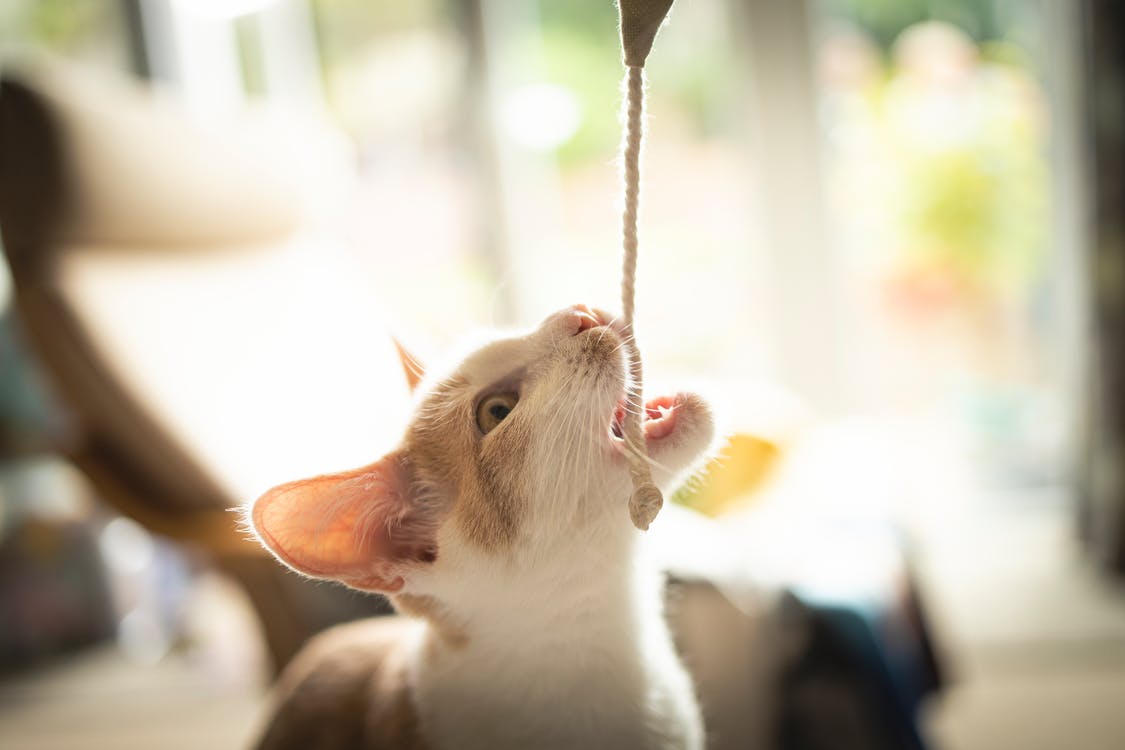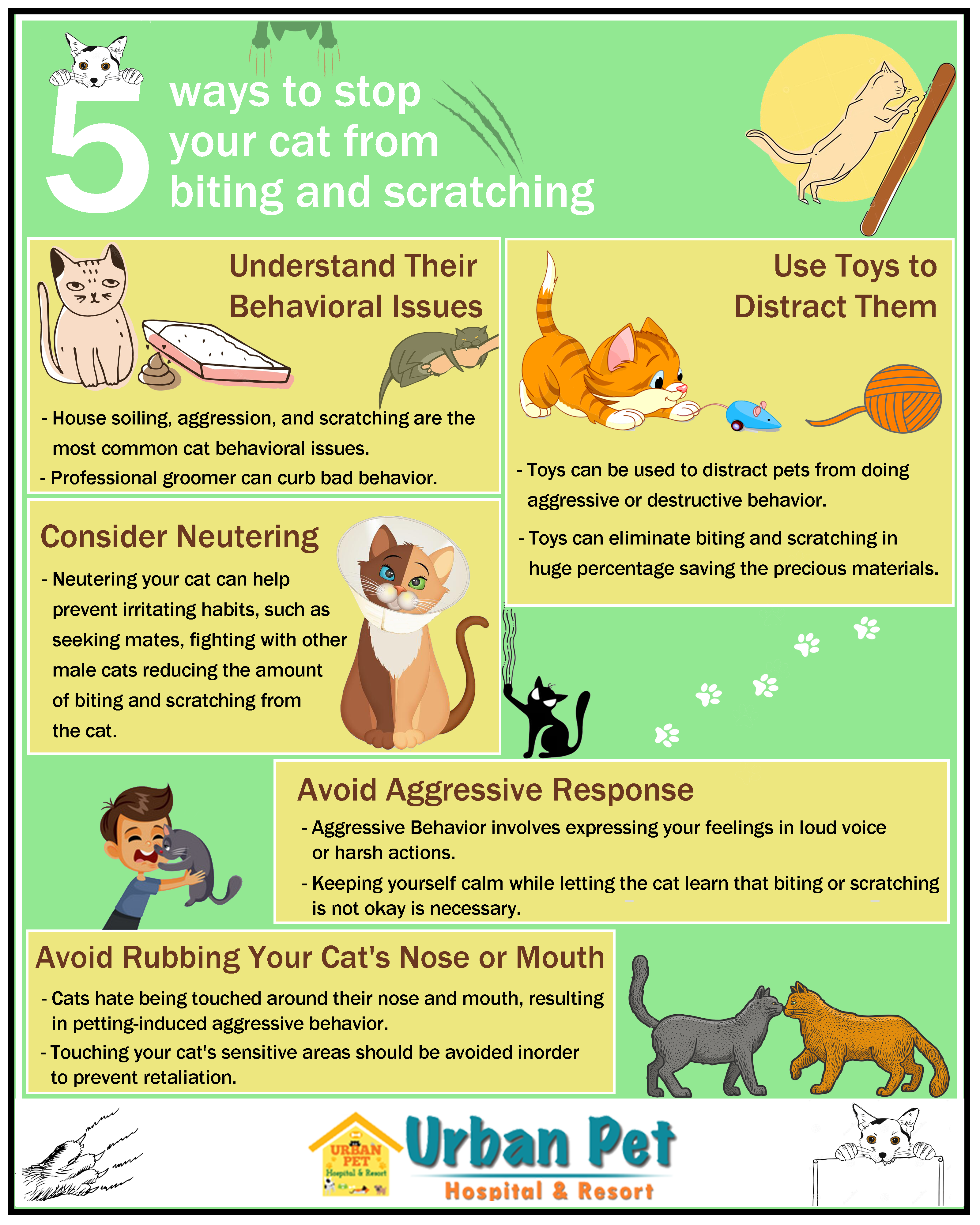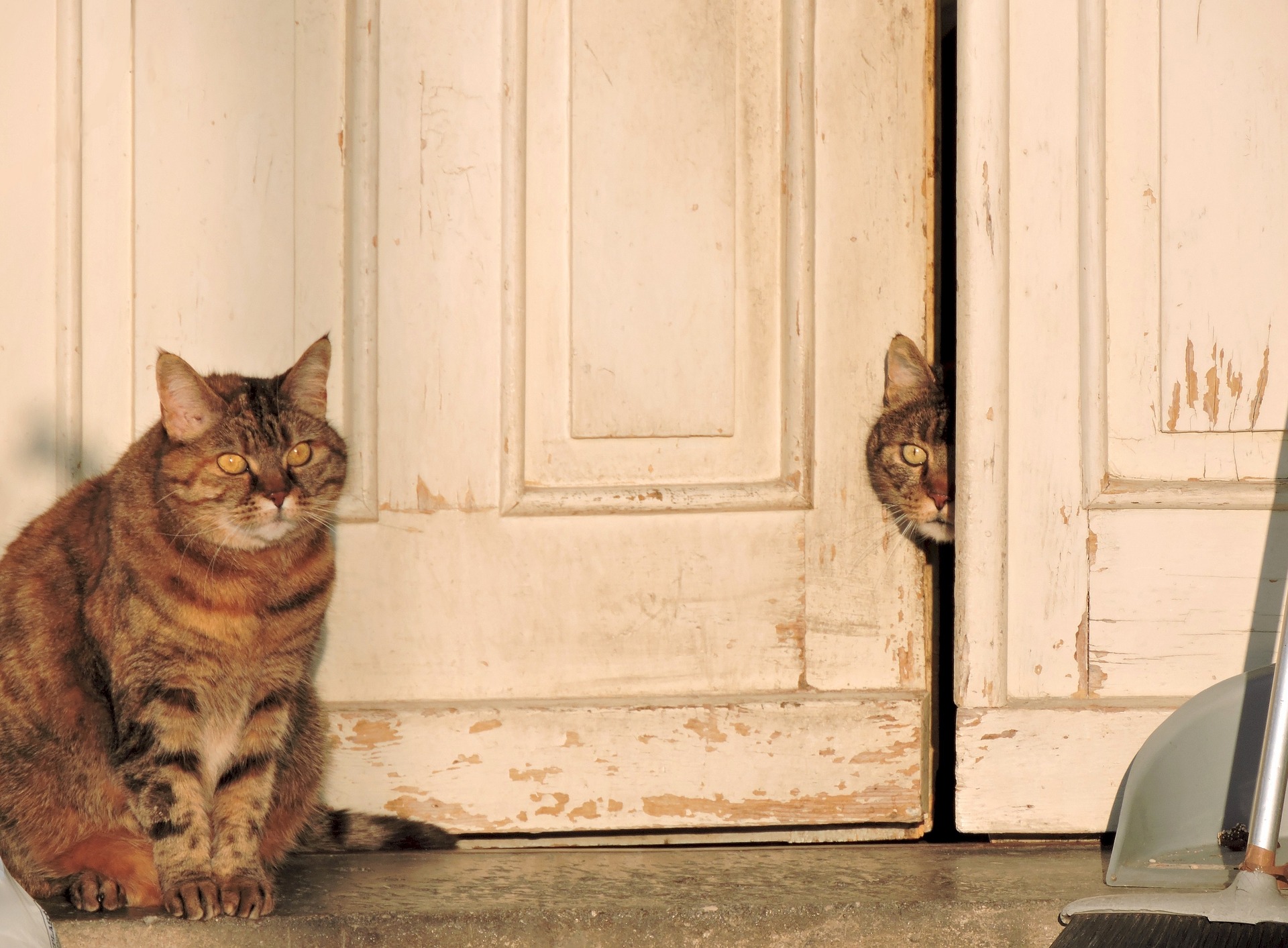Are you bothered by your feline’s feisty behavior of scratching and biting on walls, rugs, or yourself?
You should know that it is normal and quite instinctive of your cat.
Therefore, you could not do anything to prevent it, but you can try curbing their behavior of using you as their scratching and biting pole.
Discipline your cat to lessen scratching and biting by applying positive reinforcement techniques and providing the right tools and toys.
Cats tend to scratch and bite to express their emotions, mark the object with their scent, and remove the dead part of their nails.
Therefore, you can provide them with tools to exhibit their innate behavior without harming anyone.
Read on to find out how to discipline your cat to curb their aggressive behavior.
Why Do Cats Scratch and Bite?
Scratching and biting is the natural behavior of feline to express their emotions, play, and stay hygienic.
For example, your kitten will bite or nibble on small items that may resemble prey like rats.

This behavior is seen in wild cats, where they are simply exercising their innate hunter role.
Sometimes, the owners instigate this behavior and do not realize that petting the cat’s face, mouth, or nose can trigger their defensive mechanism.
Some cats prefer to be left alone and may become irritated by constant stroking.
Other times, the cats are simply aggressive towards the strangers, including humans and pet dogs, who may feel like threats.
On the contrary, cats would scratch you to invite you to a play with them or seek your attention.
Scratching out of fear and the behavioral issue is more common, where they would scratch on household items, poles, and walls to sharpen their nails.
Merck Manual points out that your cats may have some significant behavioral issues.
- Hyperesthesia: Cats are overly sensitive to being touched, becoming agitated towards the human.
- Compulsive Behavior: Aggressive grooming, chewing of wool and fabric, resulting from stress or anxiety.
- Fear: Fear of humans and animals may develop from insufficient early socialization.
- Older Cats: Older cats experience medical conditions that may cause abnormal behavior.
How to Stop Behavioral Problems in Cats
Prevent biting and scratching from becoming a pet peeve.
Here are a few ways to stop your cat from constantly biting and scratching.
1. Understand Their Behavioral Issues
Cats with behavioral issues may become aggressive toward humans and other animals.
House soiling, aggression, and scratching are the most common cat behavioral issues.

However, many reasons could cause behavioral issues in cats.
- Stress and Anxiety: Cats suffering from stress and anxiety may bite or scratch whenever a human or animal approaches them.
- Medical Problem: Any underlying medical problem may also encourage them to attack approaching humans and animals.
- Fear Aggression: Cats fearful of humans, such as strangers, may bite or scratch.
- Lack of Early Handling: Failing to socialize cats early may make them aggressive towards humans and animals.
Treating cats with behavioral issues may require a professional groomer. They will advise tricks and techniques to curb their behavioral problems.
Get in touch with Urban Pet Hospital, the best pet grooming in Urbandale, to treat your cat’s behavioral issues.
2. Use Toys to Distract Them
If your cat becomes aggressive, get them involved in something else, such as playing with interactive and engaging toys.
Toys make great tools to distract pets from doing something else, sometimes used to curb aggressive or destructive behavior.

Chew toys may be more effective in curbing biting behavior, and scratch posts or toys will help with constant scratching.
Toys with catnip will help with scratching and also boost their senses. Learn more about Yeowww! Catnip toy for cats.
Some kittens would naturally bite to fulfill teething, which would require teething toys.
Otherwise, consider cat chews to help curb their biting tendency and boost positive chewing behavior.
Strings, toy mice, and light-up lasers may also help keep them engaged.
Check this infographic for more information.

3. Consider Neutering
Neutering pets helps to keep them calmer. Without the drive to mate, they will remain quieter.
Researches indicate that non-neutered cats are more territorial, which may influence their aggressive behavior.
Neutering or spaying your cat can help prevent irritating habits, such as seeking mates, fighting with other male cats, etc.

Alternatively, you can spay your female cat.
However, keep in mind it will take up to one month after the surgery for the cat to exhibit appropriate behavior.
Spaying and neutering will also reduce testicular cancer risk and decrease the incidence of prostate diseases in male and female cats.
4. Avoid Aggressive Response
The first thing pet owners often do is shout, yell, or hit their cats when they exhibit aggressive behavior.
Physical and oral abuse will confuse your cat, often leaving an adverse reaction to their behavior.
When trying to stop or prevent your cat from biting or scratching, remember to keep yourself calm and apply positive reinforcement instead.

Some of the positive reinforcement include:
- Say “Ouch” or "oooooh" aloud whenever your cat bites or scratches and get up or move away to indicate that you are hurt.
- Ignore the behavior and walk away for a while to let them learn that biting or scratching is not OK.
- Redirect your cat to another activity, such as toy games.
- Trim their nails regularly to curb scratching.
- Give them toys to redirect their energy towards stuffed animals and squeaky toys.
Try to curb your aggressiveness when training your cat to stop biting and scratching.
5. Avoid Rubbing Your Cat's Nose or Mouth
Cats hate being touched or petted around their nose and mouth, resulting in petting-induced aggressive behavior.
Cats diagnosed with Hyperesthesia may also exhibit aggressive behavior toward human touch, especially along the back.
However, the latter condition is marked by excessive grooming, hissing, biting, crying, etc.

Consult your vet to rule out the possibility of hyperesthesia before finding out other faults.
You should avoid touching your cat's sensitive areas to prevent retaliation.
Instead, focus on finding the spots for petting, such as the head, back, or belly area.
How to Prevent Scratching and Biting in Cats?
Here are a few preventive measures to curb scratching and biting behavior in your cat.
- Discourage dominant behaviors.
- Spay or neuter young cats.
- Provide interactive toys and hiding spots like a cat condo or cat cave.
- Try using pheromones.
- Socialize your cat from an early age.
- Do not encourage aggressive play.
Conclusion
The key to avoiding scratching and biting is understanding your feline's body language and behavior.
Not all aggressive cats will exhibit similar signs, requiring diagnosis from your vet ASAP.
Introducing toys may help curb their behavior, but it would not be the permanent solution.
Therefore, be proactive about finding ways to stop your cat from scratching and biting.
Follow this guide to find the most appropriate solution.
Get in touch with Urban Pet Hospital, the best pet hospital in Urbandale, to learn more.